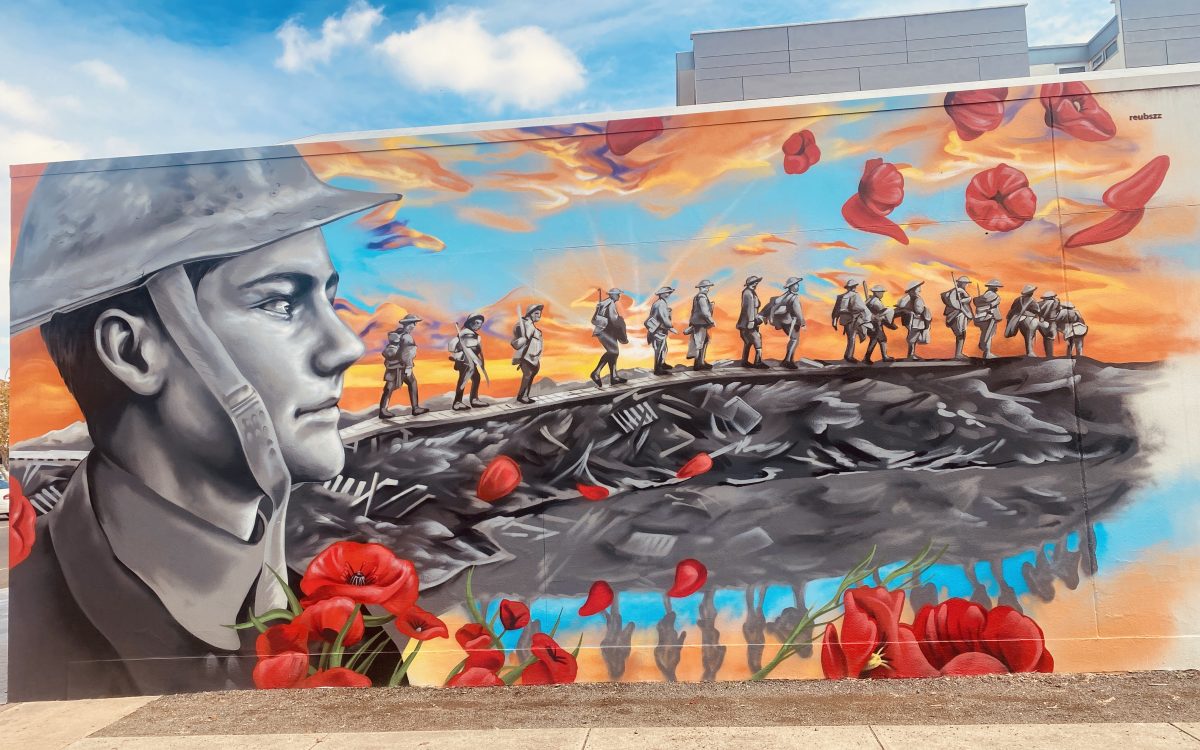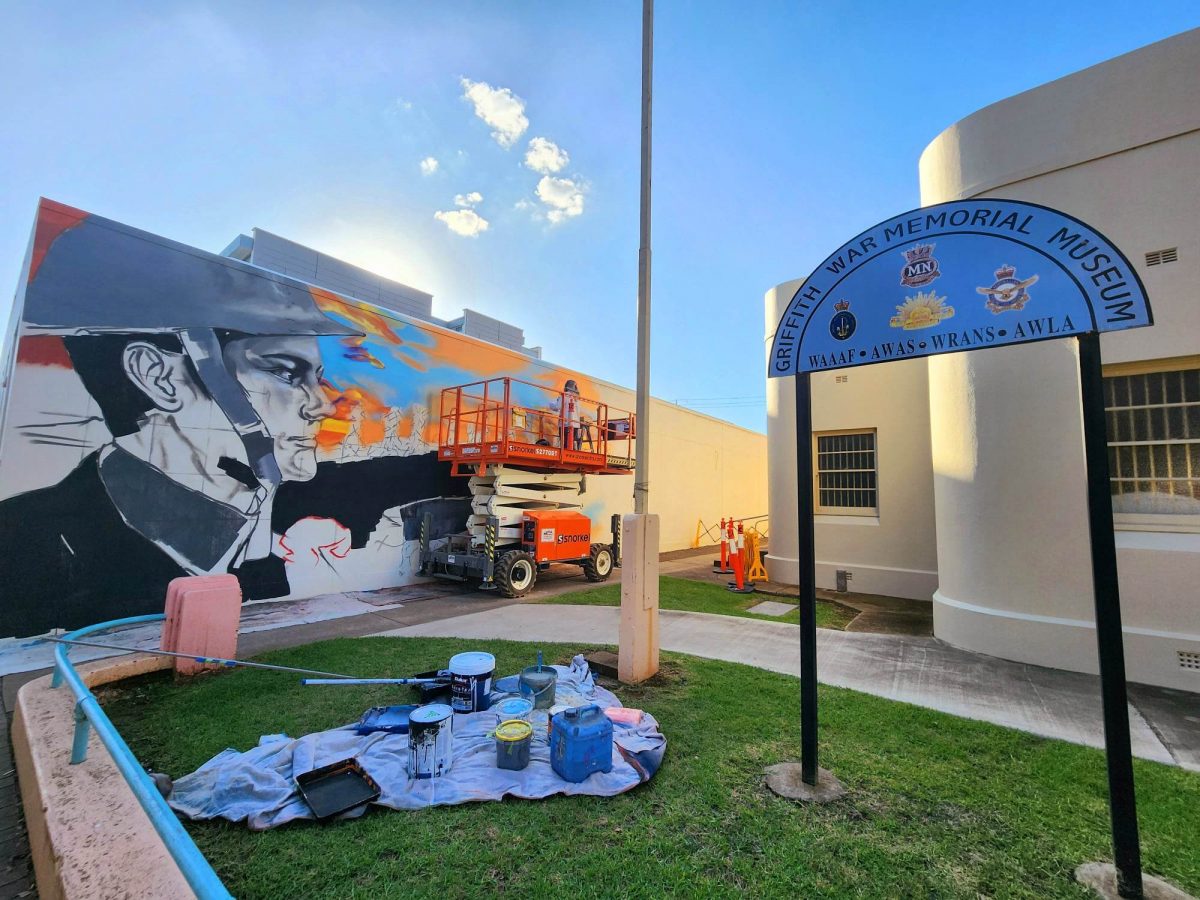
The Anzac mural in honour of Henry Dingle adorns the side of the Gem Hotel. Photo: Oliver Jacques.
A new Anzac-themed mural on the side of the Gem Hotel honours the memory of Henry Dingle, a soldier who abandoned his Hanwood farm to fight (and die) for his country during World War I.
The Griffith War Memorial Museum Inc commissioned New Zealand-born artist Reuben Boughtwood to design the eye-catching display next to its building. The 35-year-old began painting while the dawn service was underway on Anzac Day. After 37 hours of painting, he finally completed it on Saturday (29 April), at which point his work quickly became the talk of the town, with photos being shared across social media.
Museum committee member and former federal MP for the Riverina Noel Hicks had the idea for the project.
“I saw the wall there and thought that’s a good opportunity to have something to recognise our servicemen and women,” Mr Hicks said.
“Then I asked the Gem Hotel if we could use the wall, and they said yes.”

Reuben Boughtwood working on his mural. Photo: Visit Griffith.
Mr Hicks also contacted Carrah Lymer, manager of the Banna Lane Festival, an event that celebrates a series of colourful murals in the laneway behind the town’s main street. Ms Lymer connected him with Mr Boughtwood, who’d previously done artwork on the award-winning laneway.
“When I did the festival in 2021, I loved the area and the people, so when Carrah reached out and asked if I wanted to do the Anzac piece, I quickly got on board,” Mr Boughtwood said. “A bunch of people got together to make this happen, it was a real community effort. The Gem Hotel provided me with accommodation while I was in Griffith.
“To give the mural a bit of depth, I thought I’d do a portrait.”
The picture features a headshot of Lieutenant Henry Dingle, which is based on a photo taken by official WWI photographer Frank Hurley. In the mural, he is looking out towards a row of soldiers crossing a bridge to fight in the Battle of Hooge, where a number of Australians lost their lives trying to repel a German onslaught in the Belgian countryside.
Mr Dingle grew up in Sydney but moved to the Griffith area in 1913, buying Farm 55 in Hanwood. Just two years later, he gave up his farm to enlist in the field ambulance at Gallipoli.
“He’s a local hero, that’s why we chose him,” Mr Hicks said. “He just walked off his block to go and fight.”
Museum volunteer Theo Bollen said: “Our records indicate he forfeited his land on 2 June, 1915.”
According to documents kept by Western Sydney University, Mr Dingle went on to fight in France, where he received a military medal “for continually carrying wounded over country exposed to shell fire”. He died accidentally, aged 23, on 19 February, 1917, due to wounds inflicted by a prematurely exploding bomb while instructing troops on hand grenade throwing.
“He was not married, did not have children and there are no descendants of him living in this area,” Mr Bollen said.
Mr Boughtwood, who now lives in Sydney, said he’d received a great deal of positive community feedback on his work.
“I really love coming to these small communities. I’ve also done work in Wagga and Albury,” he said. “I’ve been a serious artist since I was 15. I went to art school after high school. I worked a bunch of different jobs until 2017, then I quit my job and have been a full-time mural artist since then.”

Reuben Boughtwood’s second mural on a wall in Yambil Street. Photo: Supplied.
While in Griffith, he did another mural of half a child’s face on the side of the Rooms of Requirement building, a co-working space in Yambil Street.
“It’s got a Mexican vibe, so I included a bird of paradise [plant].”
Mr Hicks said the Griffith War Memorial Museum Inc would welcome community donations to support further work honouring the Riverina’s war heroes. More information on the museum can be found on its Facebook page.
Original Article published by Oliver Jacques on Region Riverina.







